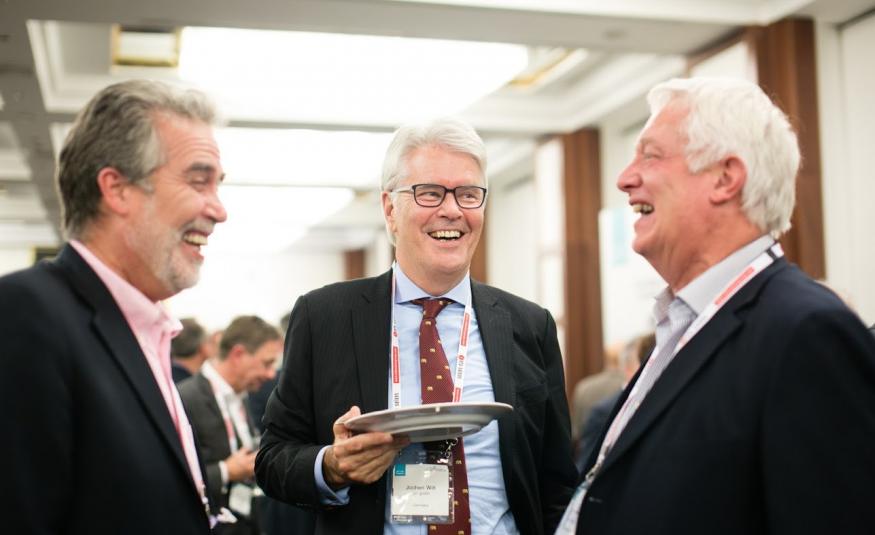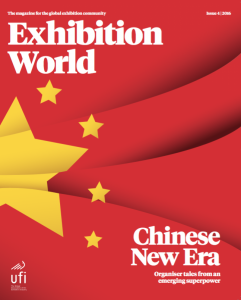Africa - The Maghreb region has suffered from political turmoil in the past decade. As a consequence, there has been little progress in the trade fair industry. Currently most organisers shy away from expanding their business into the Maghreb region. As a small step towards development of the exhibition business, Morocco has recently approved an allocation of MAD14bn (US$1.43bn) for the construction of a new convention and exhibition centre in Agadir.
UK/USA - Informa, one of the largest exhibition organisers globally, has announced the acquisition of Penton Information Services. The deal, through which Informa will increase its US presence and strengthen its Global Exhibition and Business Intelligence divisions, is worth £1.2bn (US$1.56bn) and will add 30 major US shows to Informa’s current global exhibitions
USA - In the second quarter of 2016, growth in the US trade show industry slowed down, as reported by CEIR. Compared to the development of the last two quarters, in which the CEIR Total Index indicated a growth of 3.7 per cent (Q4 2015) and 2.6 per cent (Q1 2016), the Index could only gain 1.6 per cent year-on-year in Q2 2016. The slowdown is a result of a slight decline in attendee numbers, while all other metrics have shown slight growth. However, it is a positive indicator that the trade fair industry has again outperformed the macro economy, for the sixth quarter in a row. It is questionable whether that trend will continue, as the economic situation in the US is tense with an all-time high in employment, but negative trends in productivity, investment and the services sector. The upcoming presidential election is creating additional volatility.
Russia - The trade fair business in Russia is still performing poorly and is not expected to pick up in the coming year. The country is still reeling from a drop in oil prices, currency depreciation, and sanctions by Western countries.
In order to promote Russia’s exhibition business, a plan has emerged in Russia for cooperation between BRICS exhibition organisations in seven themes. While some of the suggestions focus on general exchange of information or initiating scientific research and roundtable discussions, others include a joint organization of exhibitions and the attraction of BRICS exhibitors and visitors. Although some of these actions on first sight look helpful, they will not be able to outweigh the impacts of the overall economic situation in Russia or other effected BRICS countries.
Thailand- BITEC, one of the main exhibition venues in Thailand, will complete its expansion of 32,000sqm at the close of 2016. The project, worth THB 6.0bn (US$168m), will add three exhibition halls and will increase the total indoor exhibition space at BITEC to 70,000sqm. The trade fair business in Thailand has been growing strongly in the past decade. In terms of venue capacity and net space sold, it is number one in ASEAN. Thailand, together with Singapore, is one of the most established trade fair markets in Southeast Asia and we expect that the country will consolidate its position as the most international place for ASEAN trade fairs in the coming years. Competition from other ASEAN countries will increase, resulting in diversification of the business.
Indonesia - The trade fair business in Indonesia is continuing to grow at a fast pace, albeit from a low level. Net space sold in the country increased by 34 per cent within the past five years. With a GDP growth of about 5 per cent, Indonesia is a highly attractive market for international organisers. The new exhibition venue (ICE) will provide a further boost to the business and will increase the interest of international organisers. We expect further market growth of about 7- 8 per cent, however, opposite to Thailand and Singapore, the trade fair business will remain largely domestic.
China - Based on an assessment by an independent tender evaluation committee the tender for the construction and operation of SZICEC Shenzhen has been awarded to a consortium consisting of China Merchants Shekou Holdings (CMSH) and Shenzhen Overseas Chinese Town Holding Company (OCT). The consortium will subcontract operations to SMG. CMSH and OCT will build the venue on behalf of the Government of Shenzhen and develop the supporting commercial land. With SMG as subcontractor, the consortium will operate SZICEC for 20 years. The laying of the foundation stone for the venue, which will offer 500,000sqm of indoor exhibition space, took place on September 28, 2016.
India - is counting down to the completion of the BIEC, as reports suggest the country is holding up economically. India is still a high growth market in Asia, with GDP growth of about 7 per cent and a growth in the trade fair business well above the regional average. One of the main exhibition venues in India, BIEC in Bangalore, is about to finish part of its expansion. The construction of an additional hall of 17,500sqm will be completed by the end of 2016 and will be operational in January 2017. A further hall of the same size is planned in 2018. Upon completion of both halls, BIEC will nearly double its capacity to 76,000sqm, making it the largest exhibition venue in India.








